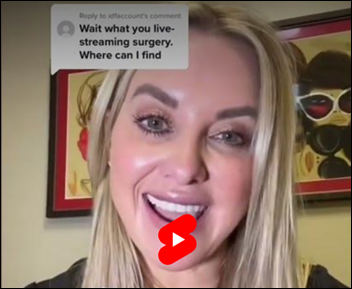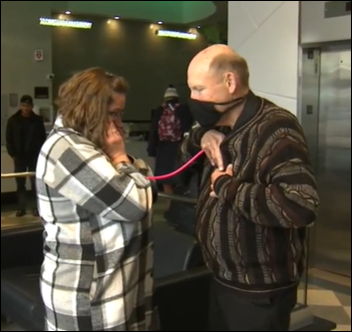Monday Morning Update 12/5/22
Top News

Healthcare consumer engagement company Carenet Health acquires Stericycle Communication Solutions, which offers online scheduling, automated messaging, and call center services.
HIStalk Announcements and Requests

I could be convinced to change my “most important winter holiday” order of importance after reading a poll comment from Cyrus about Yalda. Yalda celebrants, most of them in Iran and nearby countries, observe the winter solstice (December 21 this year), the last day of autumn and the longest night of the year, after which hours of daylight start increasing again. People stay up all night, eat watermelon and pomegranates (their glowing colors symbolize dawn and life), read poetry, and dance and play drums when the sun rises in a triumph of light over dark. Yalda means “birth.” I like it even beyond my personal obsession with changing hours of daylight — nobody is excluded or favored since the same sun shines down on us all, although I suppose folks in the Southern Hemisphere would need to buy their Yalda pomegranates in June.
New poll to your right or here: As a patient, would you be OK with your provider billing you personally for the time they spend answering clinical questions via patient portal or email? My immediate response to my own question was that of course professionals should charge me for their time that I consume voluntarily, regardless of the modality by which it is provided, but healthcare is different – will they tell me in advance that the clock is running, aren’t they already charging me ridiculously high prices without having to nickel-and-dime me over portal messages, will they bill only for new clinical work and not administrative questions or follow-up inquiries triggered by their lack of clear explanations, and should I be paying cash when I have insurance?
Welcome to new HIStalk Platinum Sponsor Bardavon. The Overland Park, NS-based company partners with employers to optimize their employees’ musculoskeletal health with both preventative and post-injury solutions offered at work, in clinic and at home. Bardavon differentiates from digital-only players by combining a hybrid approach to MSK optimization that is bolstered by a nationwide network of 25,000 physical and occupational therapists who are focused on the holistic health of the American worker. Bardavon’s unique focus on an often-forgotten subset of the worker population, those who do the manual labor in America, positions them in a unique category as they launch into the commercial sector with a focus on a complete offering enabling both healthy and injured employees as they work to optimize their movement health resulting in positive, long-time health benefits for both the employees and the employer. Thanks to Bardavon for supporting HIStalk. Thanks also to the company and long-time HIStalk reader SVP/GM Alex Benson (who worked for Cerner for many years) for making a generous donation to my Donors Choose project this past April that fully funded 41 teacher grant requests.
Webinars
None scheduled soon. Previous webinars are on our YouTube channel. Contact Lorre to present your own.
Acquisitions, Funding, Business, and Stock

Atrium Health and Advocate Aurora Health complete their merger to form Advocate Health, now the country’s fifth-largest health system with 67 hospitals, 1,000 sites of care, 150,000 employees, 21,000 physicians, and 42,000 nurses.

Advanced primary care services and technology vendor UpStream Healthcare raises $140 million in a Series B funding round, increasing its total to $185 million.
Investor-backed mental health startups – some of which were formed to exploit COVID-relaxed prescribing rules — failed to disrupt mental healthcare, Business Insider concludes, because they spent too much on advertising to attract patients and found that the direct-to-consumer model doesn’t work well because patients aren’t willing to pay. A former provider for Cerebral, which is best known for generating many prescriptions for Adderall and Ritalin, says she was allowed to spend just 15 minutes every three months with each patient.
Sales
- Dayton Children’s Hospital will implement VisiQuate’s Denials Management Analytics and Revenue Management Analytics solutions.
Announcements and Implementations
I rarely mention open positions, but CHIME has an interesting one for director of innovation that does not require relocation.
Other

A Washington newspaper describes the chaos at St. Michael Medical Center during a weeks-long ransomware downtime that affected parent organization CommonSpirit Health:
- Staff could not access Epic, so switching to paper – by many employees who have never charted manually — caused ED and ambulance backups and caused an overwhelmed ED nurse to call 911 for help.
- Employee timekeeping system caused payroll problems that still haven’t been fully resolved.
- Staff had to take the word of patients about their meds, allergies, and recent procedures, even those who were probably not reliable.
- Medications were dispensed without pharmacist oversight.
- Patients were found in the ED waiting room who weren’t on their list to be seen.
- Staff treated “scoop and run” patients who were brought in after incidents in assisted living without knowing their code status, intubation preferences, or if they wanted their families to be called.
- Complaints that have been filed with the Department of Health claim that the hospital didn’t provide safety checks while Epic was down, allowed ED capacity to be exceeded by not allowing diversion, and required two hours or longer to provide lab and imaging results. One complaint says that routine labs for ICU patients took longer than 13 hours and stat labs weren’t reported for up to five hours.
A ProPublica investigation finds that publicly traded hospital operator Universal Health Services has pocketed $38 million in Washington state taxpayer funds over five years for running special education day schools in which underpaid, poorly trained employees taught students without a published curriculum and sometimes isolated and restrained them. The state paid annual tuition of $68,000 to $115,000 per enrolled student. Experts say that UHS, which earned $1 billion in profit last year, is one of several investor-funded companies that have targeted private special education and autism services because the revenue is steady and publicly funded.
Cardiologist Eric Topol, MD covers “medical selfies” in which he used a smartphone-based ultrasound device whose instructions came from YouTube. He says that US healthcare provides no incentive for using the devices because providers make money from traditional sonographer studies, but the technology is being used in other countries. He also notes the recent contribution of AI that allows anyone to perform a screening echocardiogram as guided by the app.
Police arrest a 72-year-old hospital inpatient in Germany who turned off the “noisy” oxygen machine of her room’s other occupant several times, requiring that patient to be resuscitated and moved to ICU.
Sponsor Updates
- Premier’s Pinc AI Applied Sciences Division publishes a new study in Wolters Kluwer’s Journal of Wound, Ostomy, and Continence Nursing, “Characteristics, Hospital Length of Stay, and Readmissions Among Individuals Undergoing Abdominal Ostomy Surgery: Review of a Large Healthcare Database.”
- Sectra publishes a new case study featuring St. Maria General Hospital, “How to save time on implementation while creating brilliant workflows.”
- Volpara Health customer Virginia Mason Medical Center presents the results of the largest mammographic image quality evaluation to date, “Reduction in technical repeat and recall rate after implementation of [Volpara Health’s] artificial intelligence-driven quality improvement software.”
- TigerConnect appoints former Cooper University Health Care CEO Adrienne Kirby to its board.
- Wolters Kluwer Health adds a medication tray management solution to its Simplifi+ Compliance Suite.
- Vyne Medical publishes a case study, “Refyne Connected Care Supports Virtual Collaboration among Montana Pediatricians.”
Blog Posts
- How to Identify Super Users? (It’s Not So Obvious) (Optimum Healthcare IT)
- M&A: The Right Time for Process Improvement (Pivot Point Consulting)
- Rethink How you Deploy Infection Preventionists: Reduce Risk with PINC AI Remote Surveillance (Premier)
- 7 Proven Health Campaign Strategies to Close Gaps in Care (Relatient)
- Improve patient health literacy with these 5 tips (Sonifi Health)
- The Verdict is Unanimous: Health Systems Value Reliable Medication History (Surescripts)
- 14 tips for amazing call center customer service (Talkdesk)
- CIO Guide to EHR Integration (TigerConnect)
- Four Observations on the State of Patient Engagement (Upfront Healthcare)
- A Trilogy of Billing Blunders: Overbilling, Misbilling, and Underbilling (WebPT)
Contacts
Mr. H, Lorre, Jenn, Dr. Jayne.
Get HIStalk updates.
Send news or rumors.
Contact us.










































I can't get past the helmets and safety vests. On everyone. Including the model patient. What, are they expecting the…